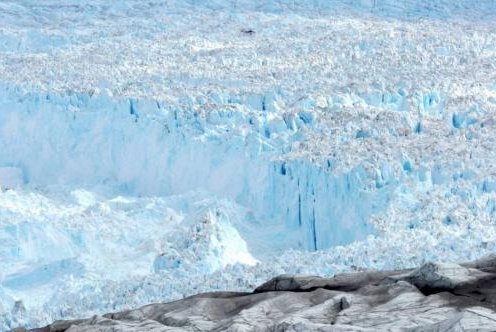New research helped scientists understand the odd behavior of a destabilized Greenland glacier. Photo by CIRES
Nov. 30 (UPI) -- Scientists now know why an unstable Greenland glacier suddenly raced toward the sea and then slowed, just days later.
Researchers used detailed observations of glacial behavior to model the movement of Jakobshavn Glacier in the wake of a 2012 calving event.
After an underwater fracture caused the glacier to destabilize, the glacier began to slide into the ocean at accelerating rates. Scientists measured the glacier moving at speeds three times the rates recorded in previous years.
But instead of moving like a runaway train, in a linear fashion, the glacier accelerated for several days and then suddenly slowed. New analysis of the event suggests progressive thinning of the glacier caused the ice to slide at increasing speeds, but a pileup of thicker ice helped to reestablish the glacier's terminus and slam on the breaks.
Scientists used ground-based radar interferometers to measure the speed and deformation of glacial ice with unprecedented detail. The observations showed small changes at the base of a glacier can have significant impacts on the glacier's speed.
The research, published in the Journal of Glaciology, could help scientists more accurately predict the impacts of melting tidewater glaciers on global sea level rise.
"As tidewater glaciers, like Jakobshavn Isbræ, thin they become increasingly sensitive to small variations in ice thickness," researcher Ryan Cassotto said in a news release. "This is because water pressure at the base of the glacier counters pressure from the weight of ice above it, which impacts how fast the glacier flows."
Cassotto now works as a researcher at Cooperative Institute for Research in Environmental Sciences, sponsored by the University of Colorado Boulder and NOAA, but studied the Jakobshavn glacier while a doctoral student at the University of New Hampshire.
"Over the last two decades, Jakobshavn Isbræ has discharged more ice than any other glacier in Greenland," said Cassotto. "It alone contributes about three percent of the current rise in global sea level annually."















